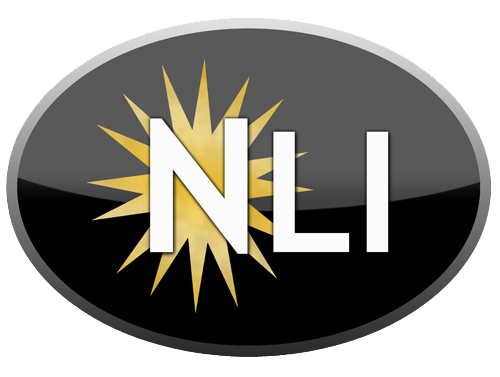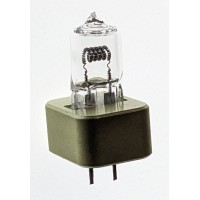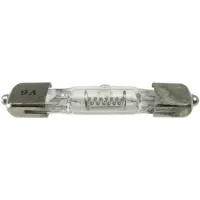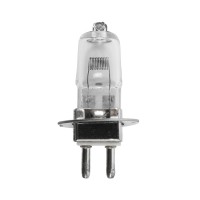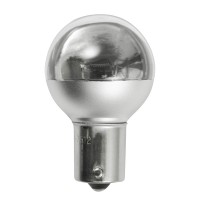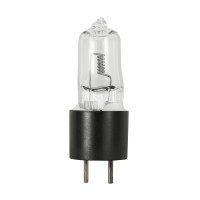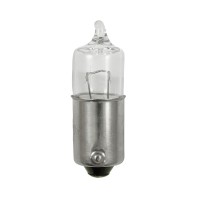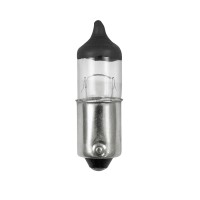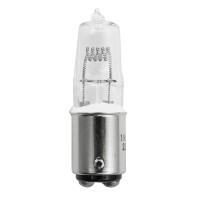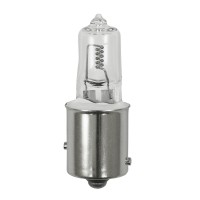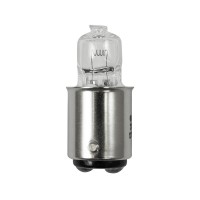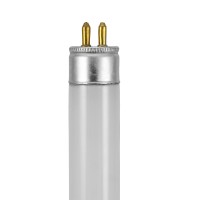Aircraft & Airport Lamps
Aircraft and airport lamps represent highly specialized lighting products engineered to meet the demanding safety, reliability, and regulatory requirements of aviation applications. These precision-manufactured lamps serve critical functions across commercial aviation, general aviation, military aircraft, and airport ground infrastructure—from runway approach lighting systems and taxiway guidance to cockpit instrument panels and passenger cabin illumination. The aviation lighting industry operates under stringent regulations established by the FAA (Federal Aviation Administration), ICAO (International Civil Aviation Organization), and other regulatory bodies worldwide, ensuring that every lamp meets exacting specifications for brightness, color temperature, beam pattern, vibration resistance, temperature tolerance, and operational lifespan. The reliability demands are absolute: aviation lighting failures can compromise safety, operations, and regulatory compliance, making quality and adherence to specifications non-negotiable.
Airport ground lighting encompasses the extensive array of lamps that illuminate runways, taxiways, aprons, and approach systems, providing visual guidance essential for safe aircraft operations during all weather conditions and times of day. Runway edge lights, threshold lights, and touchdown zone lights guide pilots during approach and landing, using precisely specified white, green, and red lamps with controlled beam patterns and brightness levels. Taxiway lights in blue and green mark paths between runways and terminals, ramps, and parking areas. Approach lighting systems (ALS) extend for thousands of feet from runway thresholds, providing critical visual references during instrument approaches. These systems use specialized lamps—often halogen or increasingly LED technology—that must withstand outdoor exposure, temperature extremes from -40°F to 150°F, constant vibration from aircraft operations, and electrical surges, while maintaining precise photometric characteristics required by FAA specifications and airport certification standards.
Aircraft interior lighting serves both functional and regulatory purposes, providing cockpit instrument illumination, passenger cabin lighting, emergency exit lighting, and utility lighting throughout the aircraft. Cockpit lamps must deliver precise, flicker-free illumination for instrument panels, overhead panels, and warning lights, often with dimming capability to accommodate varying ambient light conditions from bright daylight to night operations. The color temperature and brightness must support pilot visual acuity without causing glare or discomfort during extended flights. Passenger cabin lighting includes reading lights, aisle lighting, lavatory lighting, and general cabin illumination, all engineered for reliability in the aircraft environment with its vibration, pressure changes, temperature variations, and rigorous duty cycles. Emergency lighting systems with battery backup ensure illuminated exit paths during emergencies, subject to strict regulatory testing and certification requirements.
Aircraft external lighting includes navigation lights (red, green, white position lights), anti-collision lights (rotating beacons and strobes), landing lights, taxi lights, and logo lights, each serving specific safety and regulatory functions. Navigation lights allow other aircraft and ground personnel to determine an aircraft's position, direction of travel, and right-of-way status—the red and green wingtip lights and white tail light are internationally standardized and legally required for flight operations. Anti-collision lights with their distinctive flashing patterns make aircraft highly visible to prevent collisions. Landing lights provide intense forward illumination during takeoff, approach, and landing, using high-wattage halogen bulbs or increasingly high-intensity LED arrays capable of projecting powerful beams thousands of feet ahead. These external lamps must withstand extreme conditions: aerodynamic forces at hundreds of miles per hour, temperature variations from ground-level heat to sub-zero flight altitudes, moisture and precipitation, and the constant vibration of aircraft operation.
The transition from traditional incandescent and halogen aircraft lamps to LED technology is transforming aviation lighting, driven by LED advantages in energy efficiency, lifespan, vibration resistance, and reduced maintenance. Aircraft electrical systems have limited power generation capacity, making the 70-90% energy reduction of LED lighting valuable for reducing electrical load and fuel consumption. The 50,000+ hour lifespans of quality aviation-grade LEDs dramatically reduce maintenance requirements—particularly important for aircraft where accessing and replacing lamps requires scheduled maintenance, paperwork, testing, and potentially aircraft downtime. LED solid-state construction with no fragile filaments provides superior vibration resistance critical in aircraft applications. However, LED adoption in aviation proceeds cautiously due to stringent certification requirements—every lighting system modification must receive regulatory approval through processes including technical standard order (TSO) compliance, supplemental type certificate (STC) approval, or OEM approval, ensuring that LED replacements meet all photometric, electrical, and safety specifications.
OEM (Original Equipment Manufacturer) specifications and part numbers are critically important in aviation lighting, as substituting non-approved lamps can violate regulatory compliance, void certifications, and create safety risks. Aircraft and airport lighting systems are designed around specific lamp types with precisely defined characteristics—wattage, voltage, base type, beam pattern, color temperature, and candela ratings. Using incorrect lamps, even if they physically fit, can result in inadequate illumination, incorrect beam patterns, electrical incompatibilities, or premature failures. Aviation maintenance personnel, airport operations staff, and aircraft owners must reference OEM part numbers and specifications when ordering replacement lamps. Major aviation lighting manufacturers include Grimes (Honeywell), Whelen Aerospace, GE Aviation, Dialight, Astronics, and others whose part numbers and specifications are documented in aircraft maintenance manuals, airport lighting plans, and regulatory documentation.
Color and photometric specifications in aviation lighting are precisely defined and non-negotiable. Runway and taxiway lights must produce specific colors within tightly controlled chromaticity coordinates—blue taxiway lights must be distinctly blue, not blue-white or purple; green threshold lights must be clearly green, not blue-green or yellow-green. The candela (brightness) ratings must meet minimum values to ensure visibility at required distances under specified atmospheric conditions. Beam patterns define how light is distributed horizontally and vertically, ensuring pilots see appropriate intensity from various angles during approach and ground operations. These specifications aren't arbitrary—they're based on decades of aviation safety research and international standardization ensuring pilots worldwide encounter consistent, predictable lighting cues regardless of location. Deviations from specifications can confuse pilots, create safety hazards, and result in regulatory violations and airport certification issues.
The vibration and shock resistance requirements for aircraft lamps exceed those of virtually any other lighting application. Aircraft generate constant vibration during engine operation, experience significant forces during takeoff and landing, and encounter turbulence-induced shocks during flight. Traditional incandescent and halogen lamps with their delicate tungsten filaments are inherently vulnerable to vibration-induced filament breakage, leading to premature failures. Aviation-grade lamps use reinforced filament designs, special mounting systems, and shock-absorbing bases to improve vibration tolerance, but filament lamps remain vulnerable. LED aircraft lamps with solid-state construction eliminate the fragile filament, providing dramatically superior vibration resistance—a key factor driving LED adoption in aviation despite the higher initial costs and regulatory hurdles. The ability to withstand continuous vibration for thousands of hours without failure represents a fundamental reliability advantage.
Temperature extremes in aviation environments challenge lamp performance and longevity. Aircraft flying at cruise altitudes encounter temperatures of -40°F to -70°F at landing gear bays and external lighting locations, while ground operations in hot climates expose lamps to 120°F+ ambient temperatures plus heat generated by the lamp itself. Airport runway and taxiway lights embedded in asphalt experience similar extremes—winter cold and summer heat amplified by sun-heated pavement. Aviation lamps must start reliably in extreme cold (cold-start capability), maintain proper brightness across the temperature range, and survive repeated thermal cycling without premature failure. LED lamps generally excel in cold conditions with full brightness instantly even at -40°F, while some halogen and incandescent lamps suffer reduced output or slow warm-up in extreme cold. High-temperature tolerance requires proper thermal management, particularly for LED lamps whose lifespan and performance degrade if junction temperatures exceed specifications.
Regulatory compliance and documentation are essential aspects of aviation lighting that distinguish it from commercial and residential applications. Every lamp installation or replacement in certified aircraft must be traceable, documented, and compliant with approved specifications. Maintenance logs record lamp changes with part numbers and installation dates. Airport lighting systems must meet FAA Advisory Circular specifications and undergo periodic inspections and photometric testing. Using non-compliant lamps, even if they appear to work properly, can result in failed inspections, enforcement actions, and liability in the event of incidents. Aviation professionals must maintain thorough documentation and source lamps from reputable suppliers providing products with proper certifications, test data, and traceability. The seemingly higher costs of certified aviation lamps reflect the engineering, testing, quality control, and documentation required to meet aviation standards—costs that are justified by the safety-critical nature of the application.
Common Applications: Airport runway and taxiway lighting systems, approach lighting systems, aircraft navigation and position lights, aircraft anti-collision lighting, aircraft landing and taxi lights, cockpit instrument and panel lighting, aircraft cabin and reading lights, emergency exit lighting, apron and ramp lighting, obstruction lighting, helipad lighting
Key Requirements: FAA and ICAO regulatory compliance, precise photometric specifications (candela, color, beam pattern), extreme vibration and shock resistance, wide operating temperature range (-40°F to +150°F), long lifespan with high reliability, OEM specification compliance, proper documentation and traceability
Major Manufacturers: Grimes (Honeywell), Whelen Aerospace, GE Aviation, Dialight, Astronics, and other certified aviation lighting suppliers. Always reference OEM part numbers and specifications.
678 Aircraft Bulb 28V
Size: S8, 28.0 Volts, Single Contact Bayonet Base (BA15S) Aircraft specialty Lamp
$38.00
46-1560 28V Specialty Aircraft Bulb
Voltage: 28V, Type: Halogen Aircraft Navigation Bulb, Length: Contact for specification, Diameter..
$300.00
1970X Aircraft Bulb 28V 100W Halogen
Volts: 28V, Watts: 100W, MSCP140 : Aircraft Halogen Bulb 1,000 Hours Special Sleeve Base, CC-8..
$18.95
NLI-7512-12
Volts: 14V, Watts: 28W, Amps: 2.00, Type: Aircraft Reflector Navigation Bulb, Life Hours: 300..
$33.50
1959
Voltage: 28V, Wattage: 150W, Type: Aircraft Navigation Light, Color Temp (Kelvin): 4200K, Lumens..
$28.99
8GH409570-28
Voltage: 28V, Wattage: 50W, Type: Aircraft Signal Light, Color Temp (Kelvin): 4200K, Lumens: 1000..
$58.99
8GH005597-12
Volts: 12V, Watts: 12W, Type: Aircraft Cabin Light Bulb, Life Hours: 4000, Miniature Bayonet Base..
$4.45
8GH005549-28
Volts: 28V, Watts: 10W, Type: Aircraft Cabin Light Bulb, Life Hours: 4000, Miniature Bayonet Base..
$4.45
8GH005438-28
Volts: 28V, Watts: 11.5W, Type: Aircraft Cabin Light Bulb, Life Hours: 4000, Miniature Bayonet Base..
Item Discontinued
8GH005123-06
Volts: 6V, Watts: 4W, Type: Aircraft Cabin Light Bulb, Life Hours: 4000, Miniature Bayonet Base..
Item Discontinued
8GH002473-08
Volts: 8V, Watts: 10W, Type: Aircraft Cabin Light Bulb, Life Hours: 4000, Miniature Bayonet Base..
$8.95
1987
Volts: 28V, Watts: 150W, Type: T4 1/2 Aircraft Navigation Bulb, Life Hours: 2000, Double Contact..
$18.95
75T4Q/CL/SC28V (DA-27)
Volts: 28V, Watts: 75W, Type: Aircraft Navigation Bulb, Life Hours: 3,000, BAY15S Indexing Base..
$38.50
50T4Q/CL/SC14V (DA-15)
Volts: 12V, Watts: 50W, Type: Aircraft Navigation Bulb, Life Hours: 3,000, BAY15S Indexing Base..
$38.50
692 Miniature Bulb Aircraft Halogen
Volts: 28V, Watts: 25W, Length: 1.50 in., Type: Aircraft Navigation Bulb, Life Hours: 3000, Double..
$38.50
Q500T8/1CL 6.6A Airfield Bulb
500W Quartz Halogen Lamp, 6.6 Amp Current Controlled, Heavy Duty CC-8I Supported Filament, T8 Size..
$19.99
5113CW
Wattage: 13W, Type: Aircraft Cabin Fluorescent, Color Temp (Kelvin): 4200K, Lumens: 475, Length..
$4.50
